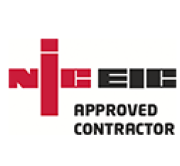Industry Articles

Which extinguisher should I use?
Putting out a fire is more than just grabbing the nearest extinguisher…unless you know what you’re doing you may do more harm than good, so here’s a quick checklist of what type of extinguishers you need to use for the most common fires.
Classes of Fire
- Class A: freely burning solids e.g. wood, paper, cloth, coal, hay etc.
- Class B: flammable liquids e.g. petrol, paraffin, paint, oil etc.
- Class C: flammable gases e.g. propane, butane, hydrogen etc.
- Class D: combustible metals e.g. aluminium, magnesium, sodium etc.
- Class F: cooking oils and fats e.g. lard, olive oil, sunflower oil etc.
- Electrical risks: electricity does not burn, but can cause ignition and is a risk requiring consideration
Which extinguisher should you use?
- Water: Class A
- Foam: Class A & B
- Carbon Dioxide: Class B & electrical risks
- Powder: Class A, B, C & electrical risks
- Specialist Powder: Class D
- Fire Blanket: Class F
- Specialist Wet Chemical: Class F
- P50 Maintenance Free Foam: Class A, B & Electrical risks
Of course, the best way to learn is through one of our Fire Safety Training sessions, which are held frequently at various venues and even at your premises if required.
These courses provide you and your staff with invaluable hands-on experience in the use of basic fire fighting equipment and can be tailored to your particular circumstances or industry.



